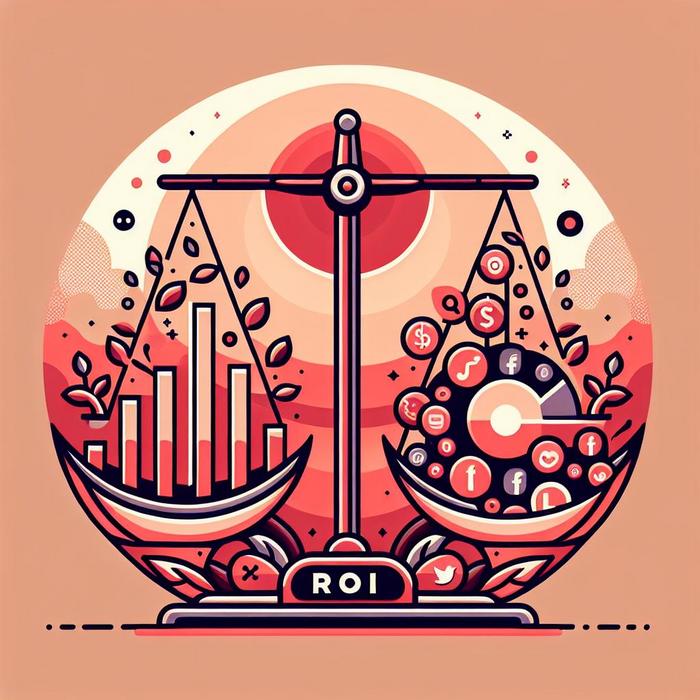Unlocking the Intricacies of LTV Prediction
LTV, or Lifetime Value, is a critical component for businesses when it comes to understanding customer behavior and optimizing advertising efforts. But, it also brings inevitable complexities that demand careful attention. For high-profile executives, unravelling the intricate aspects of LTV prediction models is essential for strategic decision-making and for driving growth in today’s highly competitive market landscape.
Why LTV Prediction Holds the Key
Understanding the worth of a customer throughout their engagement with your brand is vital. It helps to shape your advertising strategy by determining where and how much to invest in your marketing endeavors. After all, realizing the direct linkage between customer worth and advertising efficiency is crucial for deciphering the complexities of LTV.
With the precise calculation of LTV, you can accurately predict the revenue a customer may generate over time. This can help to shape future marketing strategies and ensure maximum ROI on ad spend. For executives, this level of insight is crucial in driving strategic decision-making and can be the difference between a company’s growth or stagnation. If you want to delve deeper, this enlightening piece on Google’s LTV prediction models is a must-read.
Clarifying Model Components
Complex as they may seem, LTV prediction models essentially contain two components: a prediction of future purchase behavior and a valuation of those anticipated purchases.
The prediction part is where machine learning algorithms come into play, analyzing historical data to forecast future customer behavior. On the other hand, the valuation element quantifies the worth of those predicted future purchases in present terms, allowing businesses to ascertain the customer’s lifetime value.
For executives seeking to optimize their strategic decision-making process, understanding these components is crucial. For more detailed insights, this thought-provoking post offers an in-depth look at how Tiktok uses these features to elevate campaigns.
Model Clarity: Seeing the Bigger Picture
The ultimate goal of LTV prediction models is to deliver a clear picture of the value a customer brings to the business. But, achieving model clarity is not always straightforward. It demands a combination of deep business understanding, technical knowledge, and strategic insight.
Yet, gaining such clarity on LTV can be transformative. Not only does it lead to better-informed strategic decision-making, but it also ensures more economical and efficient ad spends. For further reading, this informative article presents a clear overview of how to gain ad spend efficiency using Meta’s Value Optimization.
Executive Insights: Charting the Path with LTV Models
For executives, understanding LTV prediction models is not just about technical know-how. It also involves the ability to interpret and apply the insights drawn from these models strategically. It’s about understanding the nuances of customer behavior, industry dynamics, and advertising trends to deliver tangible results.
The critical part is how these insights are applied. For example, directing campaigns towards customers with higher LTV can yield significantly better ROI. Similarly, understanding how LTV can be enhanced can open up new avenues for business development and growth. If you are an executive aiming for such growth, the LinkedIn post by David Jesse on scaling up is worth reading.
Shaping Strategies with LTV Models
LTV prediction models pave the way for shaping successful advertising strategies. They enable the identification of customers with high potential, understand their behaviors and preferences, and optimize ad campaigns accordingly.
These models provide not just data, but actionable insights that can transform the way executives make strategic decisions. Moreover, as businesses evolve, the models can adapt too, improving their predictive accuracy over time and providing more profound insights.
Consider the revolutionizing tools of Meta, for instance. By analyzing vast amounts of data, they offer invaluable insights into optimizing ad spend. For more on this, you can explore the article on Meta’s revolutionary tools.
Other platforms like Google and Tiktok are not far behind. With their sophisticated algorithms and unique features, they provide a wealth of data that can be harnessed to shape impactful marketing strategies. For executives, these insights serve as invaluable tools to drive business growth and stay ahead in this competitive landscape.
In the end, understanding and leveraging LTV prediction models is no longer an option; it’s a necessity for executives wanting to make informed, strategic decisions that drive business growth. As you continue to explore further, it is important to tap into the potential of these models and utilize them to their fullest to truly unlock the lifetime value of your customers.
Demystifying PPC Campaigns
Driving successful Pay Per Click (PPC) campaigns requires a clear grasp of customer behavior patterns and accurate prediction of their lifetime value. This deep understanding enables effective allocation of resources to the right avenues in the marketing mix. Harnessing the power of machine-learning algorithms to predict patterns and applying LTV insights can give an edge to businesses, leading to higher profitability and better Return on Investment (ROI). You can learn more about the art of mastering PPC campaigns by reading the well-grounded writeup Google Ad benefits for major corporations.
The Power of Predictive Analytics
Predictive analytics based on comprehensive customer data is a game-changer for strategic planning and optimization of marketing efforts. Data-driven insights aid in the creation of informed strategies and identification of potential opportunities for growth. The ability to address customer needs even before they arise, owing to predictive analytics, can be a key competitive advantage for businesses. Well-resourced companies such as Google, Meta and Tiktok thrive in this space, successfully turning data into proactive strategies. Check Braidr.ai if you’re interested in understanding how data science can shape your business strategies.
The Role of Executive Dashboards
Decision-makers thrive on an amalgamation of quality data, but they also need the right tools to comprehend and respond to the information rapidly. This is where executive dashboards come into play. These handy management tools provide top-tier executives with a birds-eye view of the company’s overall performance. Armed with a detailed, data-driven overview, leaders can make informed decisions and plan targeted actions. You might find this piece on executive dashboards insightful.
Future Projections with LTV Models
Businesses rely upon future forecasts to plan their strategic endeavors. Here, LTV models offer a realistic assessment of customer value over time, enabling the right investments to ensure business growth. These models not only predict customer behavior but also quantify anticipated purchases, which allow businesses to future-proof their marketing strategies. If you’re interested in understanding the fascinating world of Google and Meta’s automated bidding strategies, this well-balanced piece on Google’s AI bidding Vs Meta’s algorithm would feed your curiosity.
The Cost-Effectiveness of Ad Platforms
Identifying the most cost-effective platform to invest advertising budgets is vital to ensure profitability. Different platforms offer individualized features that can influence cost and overall impact. While Google Ads might be more conventional, newcomer Tiktok is quickly proving to be worthy competition with its unique ad features. Gleaning insights from these platforms and their cost-effectiveness allows for strategic budget allocation for maximum ROI. One must not miss reading the comparative study on cost-effectiveness: TikTok Ads vs Google Ads .
Riding the Current with LTV
As dynamic as the business world might be, the relevance and potency of LTV prediction models remain unwavered. For professionals looking to streamline their decision-making process, these models serve as a light-house guiding the way through stormy seas. Leveraging the potential in understanding customer worth and optimizing budgets can significantly impact business growth and sustainability. It’s not just about surviving but thriving in a competitive, ever-evolving business ambiance.
Whether you’re a CEO, CFO, CMO, CGO, or a COO, unraveling the intricate, yet rewarding world of LTV models is no longer a luxury, but it’s the need of the hour, a path leading you to informed strategic decision-making and business growth. The adventure continues.










ltv prediction models sound promising for optimizing ad spend and maximizing ROI. diving into complex algorithms seems like a smart move for those in decision-making roles. curious about the potential impact on avg cpc and overall conversion rate.
complex ltv algorithms could influence conversion rate and avg cpc, but it’s all about optimizing your ad spend for the best results.